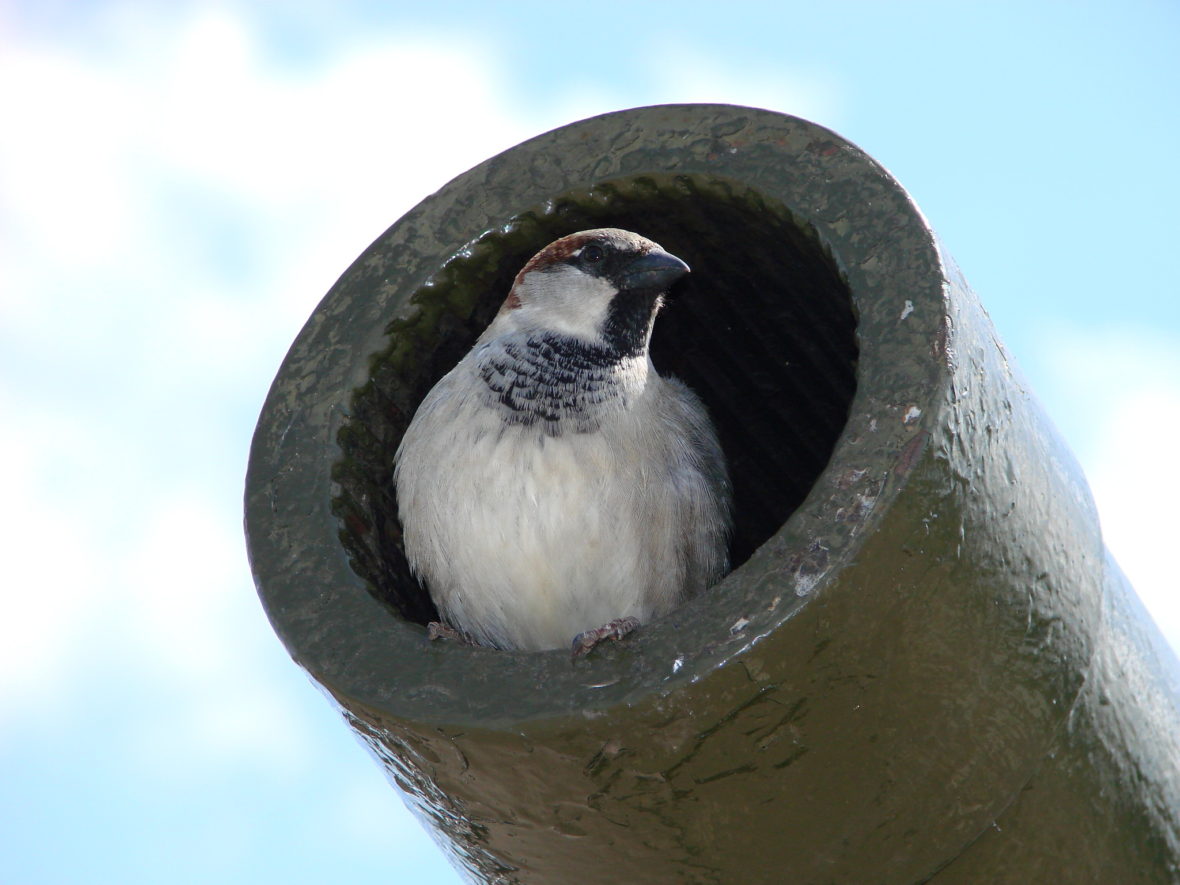Recently I was going through a plastic tub of old papers in search of letters written thirty years ago. Encounters with a past self are always startling, even after finishing a book called Know Thyself, and when I found the letters, I didn’t open them immediately. Instead I read other notes, files, and manuscripts I’d saved from my first years in Boston. Among the papers was a copy of “Poem” typed by Elizabeth Bishop—treasure shown by her friend Frank Bidart to me and others in a writing group before it was published—and signed, though not an original signature since the copy is a Xerox.
I’ve always loved Bishop’s ekphrastic poems, in part because they’re about pieces of art that may not be any good, or that may not be art at all. The subject of “Large, Bad Picture” is, well, bad. The artful object in “Cirque D’Hiver” is a child’s toy. The sculpture in “The Monument” looks crude and homely. And the painting in “Poem” has “never earned any money in its life.” The poems don’t trade in the glamour of the well-respected, or flash cultural cues to readers, including some while excluding others.
Rereading “Poem” in its sans serif font—and noticing how it differs from the type selected for Geography III—I think of its relationship to “One Art,” which has probably supplanted “The Fish” as Bishop’s best-known work. In Geography III, “One Art” follows “Poem.” It does so chronologically as well—“One Art” was written in 1976, and “Poem” completed four years before. Yet two rhetorical moves link them.
The first is the interjection that begins the first line of stanza 3: “Heavens, I recognize this place, I know it!” It follows a stanza that scrutinizes the small painting in detail. Yet almost each feature, though described with great clarity, is uncertain: “It must be Nova Scotia”; a church steeple that’s a “gray-blue wisp—or is it?”; a specklike bird that might be “a flyspeck looking like a bird” (I could say so much more about this stanza, including the collapse of time in the iris “fresh-squiggled from the tube” as it emerges simultaneously from its bud and the artist’s paintbrush, but I’ll stick to my subject). The exclamation nullifies uncertainty in a way that’s almost shocking.
Here’s what I mean by shocking: last week, on my way to hear Jill McDonough and Major Jackson read at the Cambridge Public Library, I walked past Cambridge Rindge and Latin School, the high school Dzhokhar Tsarnaev graduated from. I remembered listening to WBUR when security photos first identified him as one of the bombing suspects. On air, commentator Robin Young suddenly exclaimed, “I know him! He’s been to my house!” This was a cry from somewhere other than broadcast journalism, no matter how fine the journalism. Just so, “Heavens, I recognize the place, I know it!” shatters the frame of the poem as poem. It’s a voice from a deep, primal, intimate source, different from the one that’s been doing the looking (and temporizing) for two stanzas.
I like to surmise that Bishop’s interjection in “Poem” led to “(Write it!)” in “One Art.” Both a cry and a command, the phrase brings the reader so close to the writer’s space it’s as if we’re looking over Bishop’s shoulder, almost reaching for her pen. By using parentheses, Bishop isolates these words—and the voice, and the action—from a litany of events that surely sound like disaster, but which she assures us are not. The exclamation rises with force to shatter and reconfigure the reliability of everything previously revealed in the poem.
The second rhetorical move comes at the end of each poem, and involves Bishop’s selection of tense. Much has already been written about Bishop’s use of “shan’t” in “One Art.” The speaker imagines a possible future; she has done something that will, seen from the perspective of that future, be in the past, but, at the moment of writing, hasn’t happened yet. A similar, complicated relationship to time occurs with the “yet-to-be-dismantled elms” in the last line of “Poem.” When the picture was painted, the elms were whole; by the time Bishop looks at the painting, the elms are gone. The phrase here combines the future “yet-to-be” with the past tense, “dismantled.” Like the “two looks,” like the iris and the painting of it, time past and time present collapse into a single “time,” as do present and future in “One Art.” In “Poem,” the geese—ever present and ever changing—have the last word. In “One Art,” it’s unmodified “disaster.”
